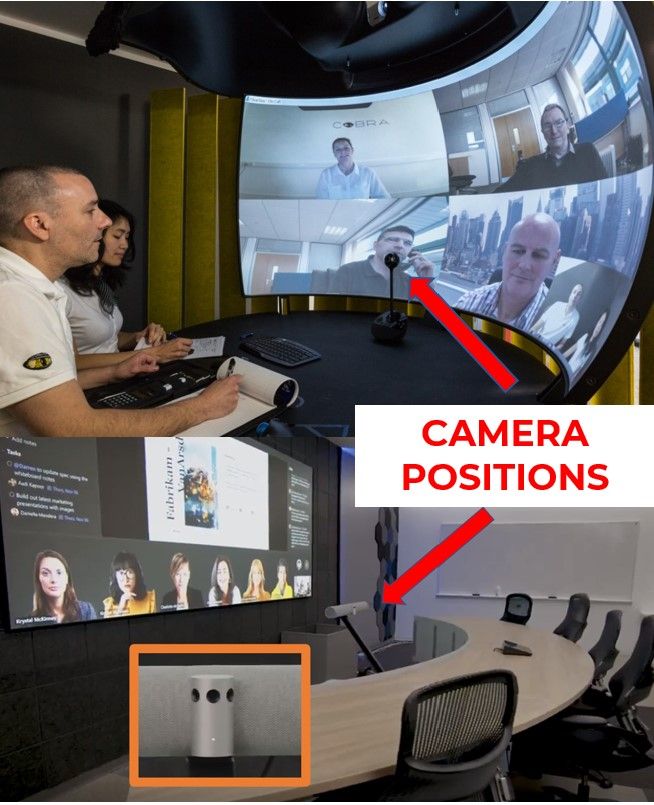What do we mean by ‘immersive’ screens in hybrid spaces and Microsoft Teams Rooms?
Do we mean a big TV?! Or do we mean IMMERSIVE?! And where do we put the VC camera?

Of course if a flat display is so big it fills your FOV (field of view) then it’s arguable it’s an immersive experience. If you’re the lucky one(s) in a central position, that is.
But if we really had a blank canvas and we have a Front Row room layout in a nice curve so we can all see each other, in the name of reciprocity might a curved - or even toroidal - screen be a good way for the remote participants to reflect the in-person participants in the most natural and organic form?
In any case, hybrid display sizes are going large! And if the VC camera is not to be pushed to the margins - creating distorted experiences for remote participants - then it needs to be ‘hidden in plain sight’.
The new Microsoft Enhanced Meeting Room does this with the #Jabra Panacast 50. But look at this #CobraSimulation mini dome (courtesy of their CEO Alexander Bradley). By clever positioning of a simple webcam - which can be replaced by Jabra, Huddly small form factor advanced VC cameras - it points to the future of camera positioning design in MTRs and hybrid workspaces.
In reality, the main limitation in the development of hybrid meeting and blended teaching spaces is the historical baggage we carry of how we’ve always done things.
Meaning that whatever the apparent hybrid workspace requirement is, the answer is always going to be some kind of glorified TV screen. Really?
The display and the space design itself are the preconditions for MTR room successes. I work with end users, AV consultants and integrators to add these dimensions.

Posted: 20th September 2022